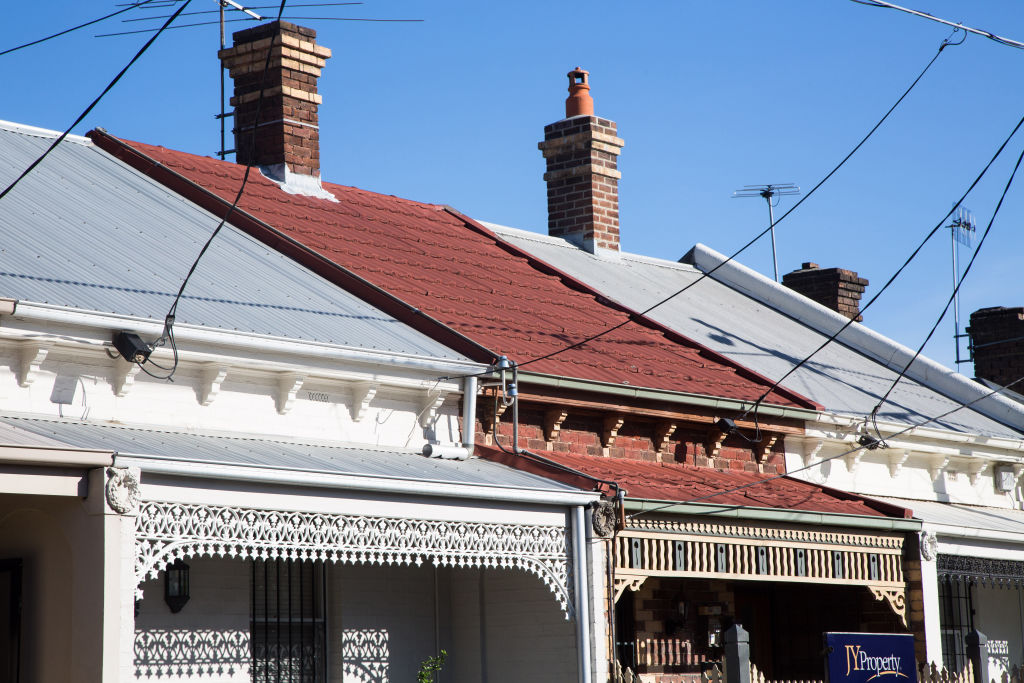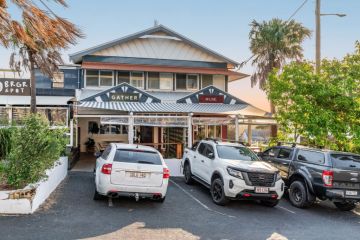Inequality gap narrowing as property prices fall: ME Bank report

The number of Australians in housing stress is on the decline as property prices fall, a new survey shows, but experts warn cooling conditions offer little help to those who need it most.
Australia’s financial inequality gap has narrowed for the first time in years, but about one in two renters and 44 per cent of mortgage-holders are still in housing stress, according to ME Bank’s latest Household Financial Comfort Report.
The survey of 1500 households also found while the number of households saving each month had increased, almost 50 per cent of households still had less than $10,000 in savings.
“About 25 per cent have less than $1000 in the bank,” said Jeff Oughton, consulting economist for ME. “A lot of people are unprepared for unexpected financial emergencies, that’s life for a lot of people unfortunately.”
While cost of living pressures are still being felt by many, the survey found the gap in financial comfort experienced by home owners compared to renters narrowed for the first time in seven years. The gap between high-income earners and average and low-income earners also closed slightly over the six months to December.
“We’ve seen a correction for wealthier, older property-owning Australians who’ve been riding the hot property and bull share markets … while middle and lower-income households have begun to benefit from an easing in living cost pressures and income gains,” Mr Oughton said.
“Together the changes have helped bridge the gap in financial inequality that had been widening,” he added. “[But] it’s still relatively high.”
While the financial comfort of both renters and moderate and low-income earners increased, and the comfort of outright home owners and high-income earners fell, Mr Oughton noted many were unlikely to feel particularly better off.
Everybody’s Home campaign spokesperson Kate Colvin said cooling property markets across the country did not ease the urgent need for a boost in social and affordable housing.
“People think that the problem is fixed as prices keep coming down,” Ms Colvin said. “[But] anyone on a low or moderate income trying to rent in a capital city … can see that it’s unaffordable.”
Ms Colvin said lower-income earners were less likely to see an increase in wages and also more vulnerable to poor job security and the increasing casualisation of the workforce.
“People are being squeezed at both ends … and at the same time it’s rents at the lower end of the market that have been increased the most,” Ms Colvin said. “You’ve got a lot more competition for cheaper rental properties.”
Of the tenants surveyed, 14 per cent were putting a whopping 50 per cent or more of their income towards their rent.
It came as a separate report from the Australian Housing and Urban Research Institute called for social housing to be treated as a form of infrastructure in order to encourage investment.
John Falzon, a senior fellow for inequality and social justice at Per Capita, said despite the reported narrowing comfort gap, he had seen little improvement in inequality.
“I’m not aware of any observable decrease in any number of people in housing stress,” Dr Falzon said.
Both Dr Falzon and Ms Colvin noted serious investment in social and affordable housing was needed to help address financial inequality, as the private market alone was not equipped to provide accommodation for people on low incomes.
“Is the housing market equipped to provide appropriate accomodation for people on low incomes? The bottom line answer is no,” Dr Falzon said.
“Rather than waiting for those fluctuations to occur in the housing market, we need some fairly strategic and well-planned and targeted interventions by government in order to do what markets cannot when it comes to boosting affordable and appropriate housing.”
States
Capital Cities
Capital Cities - Rentals
Popular Areas
Allhomes
More







